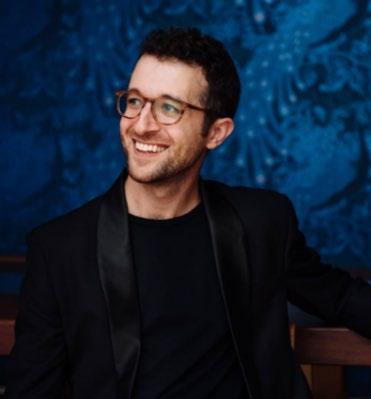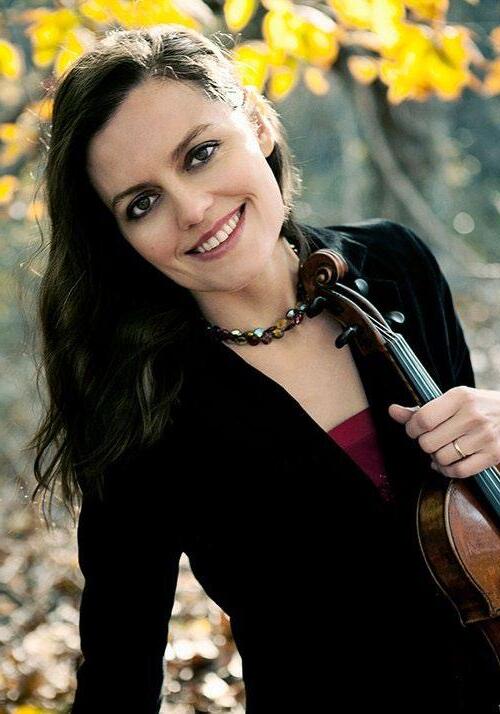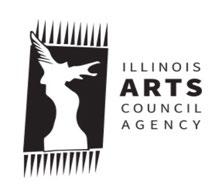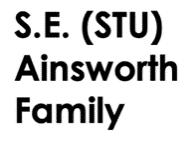GUEST
CONDUCTOR / DIRECTOR INVITADO

Chad Goodman has received widespread praise for thrilling conducting that combines “precision, agility and fervor” (N. Stanić Kovačevic, South Florida Classical Review) and for displaying the “pitch perfect combination of abandon and subtlety” (L. Budman, South Florida Classical Review).
The 2023/24 season marks Goodman’s inaugural season as Music Director of the Elgin Symphony Orchestra only the fifth leader in the orchestra’s prestigious seven-decade history. Upcoming concerts include Strauss’ Four Last Songs with soprano Christine Brewer, Prokofiev’s Symphony No. 5, Schumann’s Piano Concerto with Orli Shaham and Beethoven’s Symphonies No. 2 and No. 9.
Goodman also serves as Artistic Director of IlluminArts, Miami’s art song and chamber music concert series. In this role, he curates site-specific classical music programs in collaboration with the leading museums, art galleries, and historic venues of Miami.
From 2019 to 2023, Goodman was the Conducting Fellow of the New World Symphony. In addition to leading the orchestra in more than fifty performances, he created the educational program “SPARK: How Composers Find Inspiration,” which blended engaging audience participation with captivating light design and videography.
From 2018 to 2023, Goodman served as an Assistant Conductor to the San Francisco Symphony, working alongside Michael Tilson Thomas, Esa-Pekka Salonen, Manfred Honeck, Daniel Harding, Pablo Heras-Casado, Simone Young, and James Gaffigan, among others. He has recently made debuts with the Baton Rouge Symphony Orchestra, Greensboro Symphony Orchestra, San Francisco
Chamber Orchestra, and Orquesta Sinfónica del Estado de Puebla (OSEP).
As Founder and Artistic Director of Elevate Ensemble, Goodman’s ambitious vision for concert programming resulted in the pairing of music from Bay Area composers with underappreciated gems of the 20th and 21st centuries. Under his leadership, Elevate Ensemble established a Composer-in-Residence program and commissioned fifteen new works.
Goodman also leads workshops that teach young musicians the business skills needed to successfully navigate the music world. Forbes praised the conductor’s bold strides both on and off stage and hailed him as “An entrepreneur bringing innovation to classical music.” Last year, he published the book "You Earned a Music Degree. Now What?”
Goodman holds a Bachelor of Music degree from the Eastman School of Music and a Master of Music degree from San Francisco State University. His mentors include Michael Tilson Thomas and Alasdair Neale.
GUEST ARTIST / ARTISTA INVITADO

Violinist Isabella Lippi, who has been called “A standout, even among virtuosos,” began performing in public at the age of 10 when she made her debut with the Chicago Symphony Orchestra. She has since performed in numerous recitals and has appeared as guest soloist with orchestras in the United States, Mexico, Europe and the Far East.
In 1989, Isabella Lippi won the St. Louis Symphony Young Artist Competition, so impressing Maestro Leonard Slatkin, that for the first time in the 55-year history of the competition, the winner (Ms. Lippi) was invited to perform with the symphony
in subscription concerts under Maestro Slatkin. Of this program, the St. Louis Post Dispatch declared, “Lippi introduced rhythmic subtleties into the music of the like that haven’t been heard since the heyday of Heifetz.”
Ms. Lippi has won a number of competitions and awards including First Place in the Young Musicians Foundation National Debut Competition, Highest Honors in the National Foundation for Advancement in the Arts Talent Search, the Henryk Szerying International Competition, and the Illinois Young Performers Competition where she performed again with the Chicago Symphony Orchestra in a live television broadcast under Maestro Hugh Wolff. She was also named a Presidential Scholar in the Arts.
Born in Chicago, Isabella Lippi’s teacher have included Robert Lipsett at the University of Southern California, Dorothy Delay at the Juilliard School and Almita and Roland Vamos in Chicago.
PROGRAM NOTES
Written by - Daniel Maki
Janitzio
Silvestre Revueltas (1899-1940)
Despite a sadly shortened life, Silvestre Revueltas made a significant and lasting contribution to Mexican music. He was born on the last day of the nineteenth century in Santiago Papasquiaro in Durango into a family with artistic interests. The family moved to Mexico City where Revueltas enrolled in the National Conservatory, and he then pursued studies in the United States, first at St.Edward’s University in Austin, Texas, and then at the Chicago Musical College. His training prepared him as a violinist and conductor, as well as a composer.
In his twenties Revueltas made much of his living as a violinist, playing recitals, chamber music, and sometimes playing in movie theater orchestras for silent films. He had caught the attention of Mexico’s most influential musical figure, composer Carlos Chávez, who took him on as a protégée. In 1929 Chavez invited him to join the faculty at the National Conservatory and to become his assistant conductor of the National Symphony Orchestra of Mexico. The two men eventually had a falling-out, but for some years they were the major force in defining what Mexican music was. The Mexican Revolution of 1910 had left the country searching for its identity, not only politically but also culturally. Revueltas developed a style that, in its color, rhythmic interest, and sudden changes of mood, appropriately evoked the spirit of Mexican culture. Though he very rarely quoted them literally, he effectively exploited folk songs, blending them into a Mexican soundscape. Inspiration came from other places as well, including African rhythms and European music such as that of Igor Stravinsky, and such fashionable French composers as Eric Satie, Francis Poulenc, and Edgard Varèse.
After his split with Chávez, he tried to start a rival orchestra which failed in short order. In 1937, he put his leftist political views into practice by traveling to Spain in order to support the Republican cause in the Civil War. After Franco’s victory, Revueltas returned to Mexico to confront two problems that he had struggled with for some time: poverty and alcoholism. He died of pneumonia complicated by alcoholism.
Revueltas composed in many genres, including chamber music, vocal and piano music, and ballet and film scores. (He appeared as a bar piano player in the 1935 film, Let’s go with Pancho Villa, for which he wrote the music. When shooting starts while he is playing La Cucaracha, he holds up a sign which reads, Se supplica no tirarie al pianista. “Please don’t shoot the piano player.")
The composer’s most representative works, however, are his colorful orchestral pieces, of which Janitzio is a wellknown example. This work falls into the category of program music, i.e., music which illustrates a literary, pictorial, or some other extra-musical idea. In this case the music presents a kind of travelogue of Janitzio Island in Lake Pátzcuaro, a popular tourist destination. In a brief program note, Revueltas reveals both his mordant sense of humor as well as his left-wing outlook of bourgeois consumerism: "Janitzio is a small fisherman’s island in Lake Pátzcuaro. Lake Pátzcuaro stinks. Romantic and sentimental travelers have embellished it with verses and music of the picture-postcard type. Not to be outdone, I too add my grain of sand in an infinite yearning for glory and renown. Posterity will undoubtedly reward my contributions to tourism.”
Janitzio is set in a simple three-part ABA form, beginning with a joyously raucous section marked con brio (with vigor) which uses fragments of popular music from that region. The middle section, marked Lento espressivo (slow and expressive), provides contrast with a beautifully reflective melody heard first in bassoon and clarinet. The final section returns to the exuberance of the beginning with one interruption near the end: a brief waltz reminiscent of
19th century salon music which, after that nostalgic historical reminiscence, returns soon enough to the excitement of the present.
Violin Concerto No. 4 in D major, K. 218
Wolfgang Amadeus Mozart (1756-91)
As a performer, Mozart is usually first thought of as one of the greatest pianists of his time, someone who wrote some 30 concertos for that still relatively new-fangled instrument, many of them for his own use. It should come as no surprise, however, that as the son of Leopold Mozart, a fine violinist and the author of one of the most widely used violin method books of its time, Wolfgang was also a fine violinist. As Leopold, ever the proud papa, once wrote to his son, “You yourself do not know how well you play the violin…when you play with energy and with your whole heart and soul, yes indeed, just as though you were the first violinist in all of Europe.”
The violin was an important part of his life during his teenage years as he was a paid court musician in the service of the ruler of his hometown of Salzburg, PrinceArchbishop Hieronymus Colloredo, a boss, incidentally, whom Mozart despised and who would eventually fire him. In his late teenage years Mozart would write five violin concertos, probably for his own use, the first coming in 1773, and then, in the space of a few months, the remaining four in 1775. These works show a remarkable insight into the mind of the teenaged genius as he grows in skill and confidence from one work to another.
The Fourth Concerto looks strongly toward Italian models such as concertos by Luigi Boccherini. Considerable virtuosity is required, making it a popular showpiece in the repertoire.
Set in the standard three movement layout, the work opens with a stock fanfare-like figure which gives a brisk, march-like
* * *
character at the beginning. Eventually, though, Mozart presents several other charming and graceful melodies. The slow movement gives a foretaste of Mozart as opera composer, as the violin soars above the orchestra like a soprano aria.
As is common in concerto finales, the third movement is a rondo, i.e., a movement with a recurring refrain. The main theme is in two parts, the first a graceful tune in 2/4 time which then breaks into a gigue-like theme in 6/8 time. In the middle of the movement there is a folk-like section with a drone bass which had associations with Strasbourg, causing Mozart to call this his Strasbourg concerto. The movement ends coyly and quietly.
Symphony No. 5 in B-flat major, op. 100
Sergei Prokofiev (1891-1953)
Sergei Prokofiev spent the summer of 1944 near the small town of Ivanovo, some 50 miles outside Moscow, at the “Composers’ Home,” which had been given by the Soviet government to the Composers’ Union. Working with great gusto, he completed the Fifth Symphony by the time he returned to Moscow for the fall season. The new work would prove to be the composer’s most successful attempt at large-scale symphonic composition and a major addition to the twentieth century repertoire.
The premiere took place in Moscow on January 13, 1945, under dramatic, indeed melodramatic circumstances. Just as Prokofiev, who was himself conducting the work, raised his baton to begin, a thunderous roar of artillery was heard in salute to the Red Army, which had just won a decisive victory at the Vistula and was crossing into Germany. According to Prokofiev’s official biographer Israel Nestyev, “Prokofiev’s compelling music perfectly suited the mood of the audience," which was a feeling of elation that the tide of the war had turned decisively.
*
* *
Despite such apparent close connections to the fortunes of war, and despite the fact that many of his fellow composers at Ivanovo had been busy producing “war’’ symphonies and “victory” cantatas, Prokofiev denied that his symphony had any direct programmatic connection to the war. It was, he said, simply “an expression of the greatness of the human spirit,” and a work in which he “wished to glorify man as free and happy.”
Prokofiev’s bad -boy image as a lover of dissonant harmony, deliberate “wrong notes,” and driving, hyperkinetic rhythms has frequently drawn attention to the satiric and grotesque aspect of his style. It should not be forgotten, however, that he had a lyrical gift of a very high order and that he was quite capable of producing long, soaring melodies in the tradition of Russian romanticism, albeit with a twentieth century twist. In the Fifth Symphony, it is the first and third movements that are wonderful examples of this kind of lyricism. The second movement, on the other hand, is one of Prokofiev’s best-known scherzos and is filled with the sardonic humor for which he is so well-known. The finale begins with a restatement of the main theme of the first movement but soon breaks into a boisterous, whirlwind rhythm. Again, it is Prokofiev as parodist, and although beautifully reflective passages interrupt several times, the mocking laughter and motor energy carry the day and drive the work to a rollicking conclusion.
* * *

Special Thanks To Our Donors
$100,000 and Above
Otto Engineering
The Willow Springs Foundation
$50,000-99,999
R. Bert Crossland
John B. Sanfilippo & Son, Inc.
Pepper Family Foundation
S.E. Ainsworth Family Fund
Seigle Foundation
Anonymous-2
$25,000-49,999
Francis J. & Patricia A. Houlihan Foundation
Florence B. Palmer & Cornelia A. Palmer Foundation
Herman & Mary Zwirn
$10,000-24,999
Barrington Area Community Foundation
Mrs. Phyllis Blizzard
ComEd, an Excelon Company
Harry Eng & Frances Zollers
Florence B. Palmer & Cornelia A. Palmer Foundation
Anonymous
Grace Bersted Foundation, Bank of America, N.A., Trustee
Prof. James Sosnoski & Dr. Patricia Harkin
Al & Michy Kabeshita
Thomas & Linda Long
Frank & Patricia Maxson
Anonymous
Martin & Brigitte Nobs
Karen & Ed Schock
Dr. Emanuel & Mrs. Janice Semerad
Mrs. James L. Ziegler
Anonymous
$5,000-9,999
Ark Tehnologies, Inc
Diane Campbell
Community Foundation of the Fox River Valley
Sandra Horvath Hagan
Mrs. Dolores Nelson
Erik & Nelleke Roffelsen
Jeanne C. Sigman
John & Maribeth Totten
Anonymous-4
$2,500-4,999
Alexis India Alm
David Bosely
Michele Clark
Ray A. Daly
John & Sharyon Dasilva
Kimberly T. Duchossois, in honor of Fran Houlihan
The Farny R. Wurlitzer Foundation
Andre R. Fiebig
Jaime & Donna Garcia
Jeffrey & Jayne Griese Charitable Fund
Walter & Andrea Gumm
Valerie A. Heintz
Elizabeth Hoeft
Suzanne E. Johnson
Kairos Counseling Center
Loretta Kandl
Dr. & Mrs. James Mansfield
Barbara Maring & Robert Kulefsky
Russ & Diane Maxwell
Carole Medal
Joan Moen
Music Performance Trust Fund
Quarles & Brady
Nancy V. Rascher
Suzanne & Henry Rozycki
Pat Sekowski
Rob & Jodie Stackowiak
Cherry Stoddard
James & Judith Tammi
Rev. Arlyn & Jeanne Tolzmann
Wells Fargo Advisors
$1,000-2,499
Michael & Cecilia Anderson
Donna F. Templeton
James Bauer & Lois Myers-Bauer
Ruth Ann McKlellan
Dr. & Mrs. John & Ruth Bradburn, in memory of Jeanne Hebeisen
David L. Brown
Kathryn Canny
Walter & Nancy Carlson
Cash Cash ESO
CIBC
Private Wealth Management
Gene Collerd
Janet & Dennis Conway
Michael Czerwionka
Warren Dahn
Michael Patrick Dempsey
Theresa & Patrick Donoghue
Kevin P Durkin, in honor of Jeanne Hebeisen
Deanna K. Engelke
The Fabish Family
Eric & Jon Gaston-Falk
David Gerber, In memory of Diane Gerber
Judy Hanlon
Jill Hebeisen
Ron & Pat Henning
Brian & Bonnie Pritchard
Kathryn Huffman
Craig & Karen Johnson
Suzanne P. Johnson
Stephen & Linda Knight
Peter Koenig
Mark R. Kuntz
Peter & Constance Landwehr
Eric Larson & Margaret Williams
Elizabeth A. Littel
Carolyn & Robert Malm
Marquardt of Barrington
Mike & Marilyn McCarthy
McGrath Volvo Cars Barrington
Margaret Mechtenberg
Helen G. Moore
Motor Werks, Inc
John & Josephine Muchmore
A. John Mullins
Don & Diane Neal
Rick & Nancy Nelson
Marsha Newcomer
Meg & George Peirce
Joan Pelletier
John Pilsits
Richard Renner, in memory of Marion Laffey
Erin Riehle
Mr. & Mrs. Richard Robertson
Lois Robinson
John & Carole Ruby
Tim Shaffer
Drs. April & Frank Smith
Helen Wu Sprague, in memory of Dr. Pat Clark
Laura M. Sterba
The Hebeisen Family
Jon Hauser and Jean Stone
Carol Taylor
Marc Thayer
American Association of University Women
Aimee Virning, In Honor of Rylan Virnig
Wickstrom Auto Group
St. Charles Bank & Trust Company
Philip J. Zack
Charles & Nancy Zimmerman
Anonymous-2
$500-999
Robert Acker & Alison Bleick
Mark S. Albert
Ms. Sharon Aleckson
Alexander's Restaurant
Helen Anderson
Herb & Marge Anderson
Allan & Joanne Ayers
Donna Bach
Donald Bak
Lisa & Tim Baran
Ross Beacraft
Anna Bicanic Moeller
Connie Bischof
Mr.& Mrs. Ray B. Boroughf
Melinda Borum
Dale Adai Braun
Ms. Diane Bridges
Brittain's Express Oil
Anne L. Burman
Mr. & Mrs. Robert L. Cabeen
Tatiana Calhamer
Robert Chiappetta
Ann Chipman & Greg Kuepfer, in memoroy of Jeanne Hebeisen
John & Stephanie Cullian
Downtown Neighborhood Association of Elgin
Pat & Terry Dunning
Elgin Symphony League
Nancy Fleming
Ms. Jeanne M. Fox
Jennifer Fukala
Karl H. Gabbey
Terry Gabel & Sue Brigham
The Gifford Park Association
Richard Goodman
Judy & Gary Griffith, in memory of Amy Goodman, and in honor of Chad Goodman
Robert & Kathleen Hahn
Vivian J. Hileman
Mary Hunter
Jim and Pat Jocius
Frank & George-Ann Kahoun
Nancy Kawasaki
Kirkpatrick, Jones And Herzog Insurance Agency, In
Jim & Sue Lamb
Sharon LeCount
Ms. Jane Lehmann
Barbara R. Long
Robert & Mary McCann
Candace D. McCreary
Dr. Elizabeth McKay
Ruth-Ann McKellin
James McNamee
Loni Mecum
Monica & Sanford Morganstein
Dr. & Mrs. Jeffrey R. Neufeld
Janet Page Neel Patel
Cheryl J. Peacock
Jean Pechtel
Ernie & Joanne Perone
PK Tax Services, LLC
Glen & Beth Prezembel
Quintessential Media Group
The Miller Charitable Fund, a Donor Advised Fund of Renaissance Charitable Foundation
Gail Rhodes
Richard and Carol Leonard Foundation
Thomas & Barbara Rowan
Howard & Gene Royer
Jay & Debbie Schroeder
James & Kathleen Secora
Mark & Ellen Sheppard
Bruce & Kathleen Sicklesteel
Bonita S. Skapyak
Norma Smith
Glenn & Susan Spachman
Savitha Susarla
Elmer & Mary Sweet
Hal & Karen Theis
Fred & Sue Thorne
Celine Voris
Ms. Joyce Wagner
David C.Waring
Hon.
Bonnie M. Wheaton
Mr. & Mrs. Larry Wild
Ron Clayton & Elyse Williamson
W. R. Meadows, Inc.
Jan and Bob Andry
Tom & Linda Youngren
Manassa Law
Anonymous-3 $250-499
Diane J. Aitken
Sallie & George Gill
Douglas Anderson
Ms. Sara Ellen Anderson
Judith & Norm Andrews
Mr. James Bachman
Mr. & Mrs. John Becker
Charles & Marlene Black
Ronald Blake
Robert & Susan Blassick
Marlene R. Boncosky
Edward & Phyllis Boyd
Hugh Brady & Renee Gladstone
Ms. Joan Brody
Charles Burnidge
Colin C. & Glorianne Campbell
Ruth & Ken Carlson
Michael & Biana Castro
Inge & William Collins
Lillian Croke
Julie Domagalski
Matt and Cherie Dorfman
Jon & Joy Duerr
Mr. & Mrs. Stephen Etherington
Bonnie Fitzpatrick
Mary Ellen Flaks
Robert & Lynn Gilly
Sherri & Jeff Goodlove
Richard Goodman
Ben & Corinne Grotenhuis
Sharon Hahn
Anonymous
Jeanne Hintz
Dr. Judith Hopkins
Lynn & Craig Horswill, in memory of Robert Janas
Judy Johnson & Blair Stringfellow, in honor of Dave & Suzanne Johnson
Philip & Pat Johnson
Michele Keehan
Ron & Angela Keller
Frank & Colleen Kirkaldy
William & Agnes Kovacs
Douglas C. Kramp
Terri & Tom Lamberti
Joseph Lampinen
Anonymous
Mr. & Mrs. Robert Larrabee
Richard & Patricia Lutz
Ms. Sandra Magana
Lynn Mall
Mary E. Maloy
J. A. McDonald
Richard & Kathleen Michalec
Dr. Michael Montgomery and Rev. Peggy McClanahan
Jane & Raymond Mysliwiec
Linda O'Connor
Linda O'Gara
John & Marilyn Ortinau
Jim & Kathy Pluymert
Michael & Joyce Rawlings
Gail & Dennis Rossow
Michael & Robin Rothamer
Nancy Rust
Jody Schmeck & Robert Seltzer
Richard Schwemm
Luanne Scola & Joseph Scola
Rachel Shannon
Maria Arrua & Matthew Sheppard
Briain & Melissa Sherman, in honor of Jean Bishop
Beverly Smithberger
William & Roseann Stenzel
Linda Stolt
Ms. Jane C. Taylor
Michael Tellin
Louise Tiemann
Linda Ugo
Deb Vensel
Aileen & Gregory Vogel
Dorothy Voigt
Richard Renner & Jacqueline Vossler
Norman Wilkinson & Diana March
John T. Zawada
Anonymous-2












